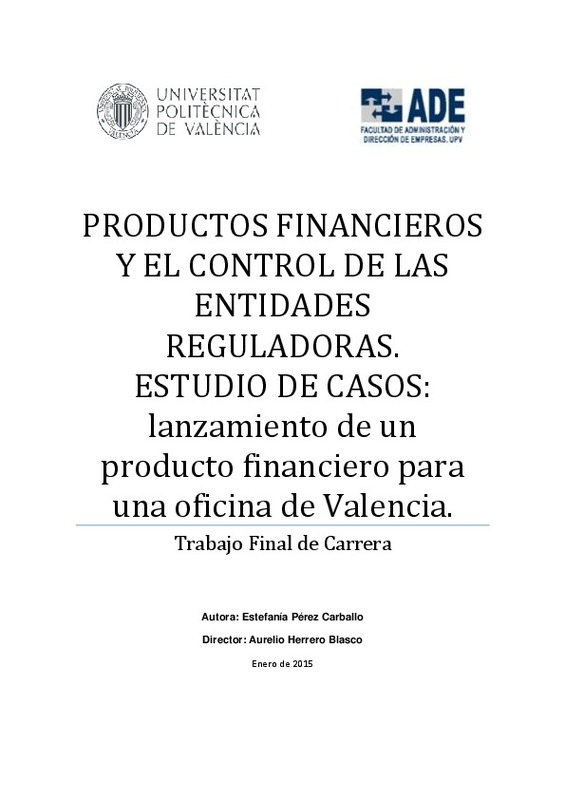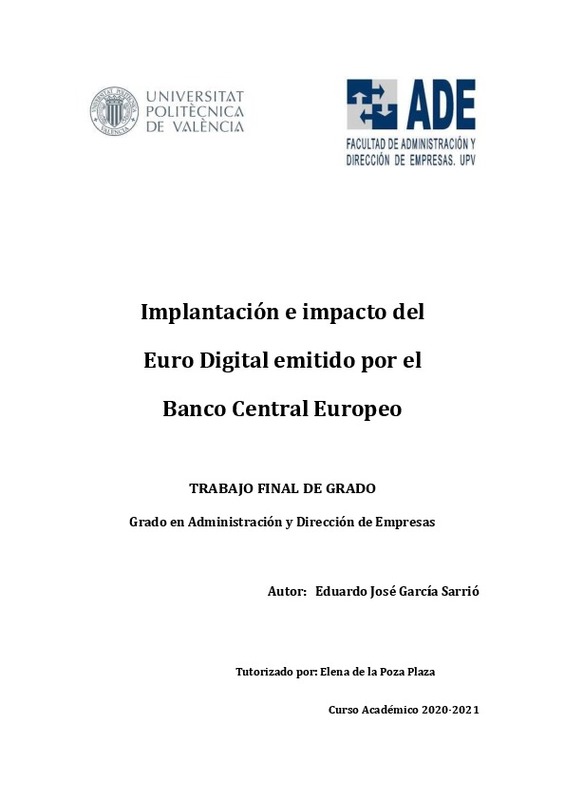JavaScript is disabled for your browser. Some features of this site may not work without it.
Buscar en RiuNet
Listar
Mi cuenta
Estadísticas
Ayuda RiuNet
Admin. UPV
Study on Machine Learning and Predictive Analytics in Business Finance and Development of a Proof of Concept for Financial Forecasting by Leveraging SAP Solutions
Mostrar el registro sencillo del ítem
Ficheros en el ítem
| dc.contributor.advisor | Conesa García, María Pilar
|
es_ES |
| dc.contributor.advisor | Ren, Jeana
|
es_ES |
| dc.contributor.advisor | Friedl, Gunther
|
es_ES |
| dc.contributor.author | Gamón Bueno, Bernardo
|
es_ES |
| dc.date.accessioned | 2023-06-21T10:46:00Z | |
| dc.date.available | 2023-06-21T10:46:00Z | |
| dc.date.created | 2023-05-24 | |
| dc.date.issued | 2023-06-21 | es_ES |
| dc.identifier.uri | http://hdl.handle.net/10251/194451 | |
| dc.description.abstract | [ES] El aprendizaje automático y el análisis predictivo están a la vanguardia de la innovación. Entre sus muchos usos, destaca su gran potencial para mejorar la forma en que las empresas dirigen sus negocios. Estas innovaciones pueden mejorar enormemente las previsiones financieras y la toma de decisiones, ayudando a los CFO y a los controllers financieros a navegar por situaciones empresariales complicadas y dinámicas. Esta tesis de máster explora la aplicación de el aprendizaje automático y el análisis predictivo en las finanzas empresariales y desarrolla una prueba de concepto para la predicción financiera. La investigación proporciona una visión general del estado actual de las técnicas de aprendizaje automático y análisis predictivo, sus diferencias, categorías y formas de clasificación, los modelos más comunes y los enfoques para la selección de modelos. A continuación, se exponen el proceso de modelización financiera y los métodos más comunes para la previsión financiera. También se presentan varios casos de uso específicos para demostrar los beneficios potenciales del uso de el aprendizaje automático y el análisis predictivo en las finanzas empresariales, y se examinan los retos y oportunidades que presentan estas tecnologías. En base a esta investigación, se desarrolla una prueba de concepto para la predicción financiera. El objetivo de esta prueba de concepto es mostrar la viabilidad y las posibles ventajas del uso de estas tecnologías en situaciones reales de proyección financiera. Para ello, se diseñan y prueban soluciones de previsión financiera utilizando tanto código abierto como una aplicación de SAP lista para usar. A continuación, se analizan y discuten los resultados, destacando los posibles beneficios y limitaciones del uso de el aprendizaje automático y el análisis predictivo para los departamentos financieros de las empresas. Se espera que esta tesis contribuya al creciente cuerpo de conocimientos sobre la aplicación de tecnologías avanzadas en las finanzas empresariales y proporcione ideas a los directores financieros y controllers financieros sobre cómo generar proyecciones financieras más precisas e informadas en un entorno empresarial que cambia rápidamente. | es_ES |
| dc.description.abstract | [EN] Machine Learning and Predictive Analytics are at the forefront of innovation. Among their many uses, there is their great potential to improve the way companies steer their business. These innovations can greatly enhance financial forecasting and decision-making, assisting Chief Financial Officers and controllers in navigating complicated and dynamic business situations. This Master's Thesis explores the application of Machine Learning and Predictive Analytics in business finance and develops a proof of concept for financial forecasting. The research provides an overview of the current state of the art in Machine Learning and Predictive Analytics, their differences, categories and forms of classification, the most common models, and the approaches for model selection. Then, the financial modeling process and the most common methods for financial forecasting are exposed. Several specific use cases are also presented in order to demonstrate the potential benefits of using Machine Learning and Predictive Analytics in business finance, and the challenges and opportunities presented by these technologies are examined. Based on this research, a proof of concept for financial forecasting is developed. The purpose of this proof of concept is to show the viability and possible advantages of using these technologies in actual financial forecasting situations. This involves the design and testing of financial forecasting solutions using both open-source and a ready-to-use SAP application. The results are then analyzed and discussed, highlighting the potential benefits and limitations of using Machine Learning and Predictive Analytics for the financial departments of companies. This Thesis is expected to contribute to the growing body of knowledge about the application of advanced technologies in business finance and provide insights to CFOs and controllers on how to generate more accurate and informed financial projections in a business environment that is rapidly changing. | es_ES |
| dc.format.extent | 84 | es_ES |
| dc.language | Inglés | es_ES |
| dc.publisher | Universitat Politècnica de València | es_ES |
| dc.rights | Reserva de todos los derechos | es_ES |
| dc.subject | Aprendizaje automático | es_ES |
| dc.subject | Análisis predictivo | es_ES |
| dc.subject | Previsión financiera | es_ES |
| dc.subject | Directores financieros | es_ES |
| dc.subject | Controllers | es_ES |
| dc.subject | Finanzas empresariales | es_ES |
| dc.subject | Prueba de concepto | es_ES |
| dc.subject | Estado de la técnica | es_ES |
| dc.subject | Categorías | es_ES |
| dc.subject | Formas de clasificación | es_ES |
| dc.subject | Modelos comunes | es_ES |
| dc.subject | Selección de modelos | es_ES |
| dc.subject | Proceso de modelización financiera | es_ES |
| dc.subject | Casos de uso | es_ES |
| dc.subject | Código abierto | es_ES |
| dc.subject | SAP | es_ES |
| dc.subject | Proyecciones financieras | es_ES |
| dc.subject | Algoritmos | es_ES |
| dc.subject | Inteligencia artificial | es_ES |
| dc.subject | Machine Learning | es_ES |
| dc.subject | Predictive Analytics | es_ES |
| dc.subject | Financial forecasting | es_ES |
| dc.subject | Chief Financial Officers | es_ES |
| dc.subject | Business finance | es_ES |
| dc.subject | Proof of concept | es_ES |
| dc.subject | State of the art | es_ES |
| dc.subject | Categories | es_ES |
| dc.subject | Forms of classification | es_ES |
| dc.subject | Common models | es_ES |
| dc.subject | Model selection | es_ES |
| dc.subject | Financial modeling process | es_ES |
| dc.subject | Use cases | es_ES |
| dc.subject | Open-source | es_ES |
| dc.subject | Financial projections | es_ES |
| dc.subject | Algorithms | es_ES |
| dc.subject | Artificial intelligence | es_ES |
| dc.subject.classification | ORGANIZACION DE EMPRESAS | es_ES |
| dc.subject.other | Máster Universitario en Ingeniería Industrial-Màster Universitari en Enginyeria Industrial | es_ES |
| dc.title | Study on Machine Learning and Predictive Analytics in Business Finance and Development of a Proof of Concept for Financial Forecasting by Leveraging SAP Solutions | es_ES |
| dc.title.alternative | Estudio sobre el aprendizaje automático y el análisis predictivo en finanzas empresariales y desarrollo de una prueba de concepto para la previsión financiera utilizando soluciones de SAP | es_ES |
| dc.title.alternative | Estudi sobre aprenentatge automàtic i anàlisi predictiva en finances empresarials i desenvolupament d'una prova de concepte per a la previsió financera utilitzant solucions de SAP | es_ES |
| dc.type | Tesis de máster | es_ES |
| dc.rights.accessRights | Cerrado | es_ES |
| dc.contributor.affiliation | Universitat Politècnica de València. Departamento de Organización de Empresas - Departament d'Organització d'Empreses | es_ES |
| dc.contributor.affiliation | Universitat Politècnica de València. Escuela Técnica Superior de Ingenieros Industriales - Escola Tècnica Superior d'Enginyers Industrials | es_ES |
| dc.description.bibliographicCitation | Gamón Bueno, B. (2023). Study on Machine Learning and Predictive Analytics in Business Finance and Development of a Proof of Concept for Financial Forecasting by Leveraging SAP Solutions. Universitat Politècnica de València. http://hdl.handle.net/10251/194451 | es_ES |
| dc.description.accrualMethod | TFGM | es_ES |
| dc.relation.pasarela | TFGM\155864 | es_ES |
Este ítem aparece en la(s) siguiente(s) colección(ones)
-
ETSII - Trabajos académicos [10404]
Escuela Técnica Superior de Ingenieros Industriales




![[Cerrado]](/themes/UPV/images/candado.png)



